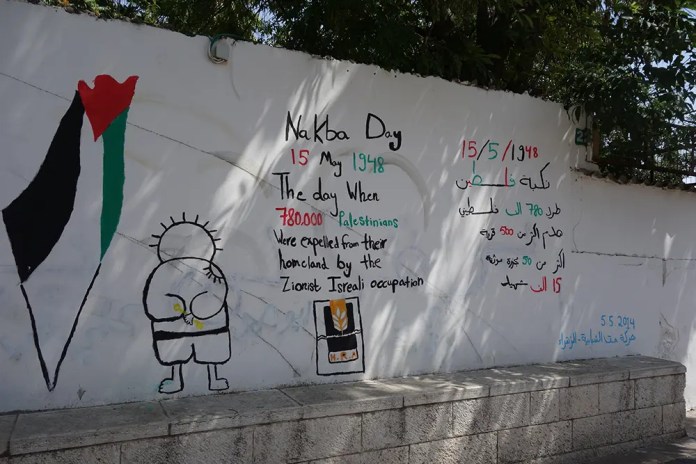
The Gaza Strip, home to over two million people, has become a graveyard under relentless bombardment. Since October 7, 2023, Israel’s military campaign has devastated homes, hospitals, and schools, while the world watches in silence. This is not self-defense; it’s systematic destruction. In this article we will deep dive into the history of the Gaza crisis.
The Gaza Crisis: Understanding a Deep-Rooted Tragedy
It’s hard to watch the news from Gaza without feeling a sense of profound heartbreak and confusion. The images are devastating, the history is complex, and the global response often feels contradictory. This isn’t just a political issue; it’s a human one.
Let’s break down the roots of this conflict, the reality on the ground today, and why it matters to all of us.
A History of Conflict: How Did We Get Here?
To understand the present, we have to look at the past. The tension between Israelis and Palestinians isn’t new—it’s the result of over a century of displacement, war, and broken promises.
1. The Balfour Declaration (1917)
Imagine a foreign power promising your land to another group without your consent. That’s what happened in 1917 when Britain pledged support for a “national home for the Jewish people” in Palestine, where over 90% of the population was Arab. This set a precedent for external decisions dictating Palestinian fate.
2. The Nakba – “The Catastrophe” (1948)
In 1948, following a UN plan to partition Palestine, Israel declared statehood. What followed for Palestinians is known as the Nakba (catastrophe). Over 700,000 people were forcibly displaced from their homes, and hundreds of villages were destroyed. This mass exodus created a deep, generational trauma and a refugee crisis that persists today.



3. The Six-Day War (1967)
In a swift conflict, Israel occupied the Gaza Strip, the West Bank, and East Jerusalem. This marked the beginning of the modern-day military occupation, placing Palestinians under Israeli control and leading to the establishment of settlements, which are considered illegal under international law.
4. The Intifadas and the Gaza Blockade
- First Intifada (1987-1993): A largely grassroots uprising against the occupation, characterized by civil disobedience.
- Second Intifada (2000-2005): A more violent uprising that ended with Israel constructing a separation barrier.
- Gaza Blockade (2007-Present): After Hamas took control of Gaza, Israel and Egypt imposed a strict land, air, and sea blockade. This has turned Gaza into what many call an “open-air prison,” with severe restrictions on movement, food, water, and essential supplies.
The Current Humanitarian Crisis in Gaza
Gaza crisis Today, the situation in Gaza is dire. Following the events of October 7, 2023, Israel launched a massive military campaign.
The Overwhelming Human Cost
The numbers are staggering, but they represent real people:
- A significant majority of the reported tens of thousands killed are women and children.
- Over 60% of Gaza’s homes and vital infrastructure, including hospitals and schools, have been damaged or destroyed.
- Thousands more are missing under the rubble.
The Siege: A Struggle for Survival
Beyond the bombs, a humanitarian crisis is unfolding by design:
- Starvation as a weapon: Blockades on aid trucks have led to widespread famine and dehydration.
- Collapse of healthcare: Hospitals without power or supplies are unable to treat the wounded.
- No safe haven: With borders closed, civilians have nowhere to escape.
The Psychological Trauma
The invisible wounds run deep. An entire generation of children in Gaza is growing up knowing only fear, loss, and the sound of explosions. The long-term mental health impact is immeasurable.
The Global Response on Gaza crisis: A Question of Double Standards?
This is where many people feel a deep sense of hypocrisy. The international community’s response has been widely criticized.
- Western Support: Many Western governments continue to provide military aid and diplomatic support to Israel, often framing the conflict solely through the lens of “Israel’s right to defend itself,” while paying less attention to Palestinian rights and lives.
- UN Impotence: While UN agencies have issued warnings and called for ceasefires, the UN Security Council has been largely paralyzed by veto powers.
- Media Narrative: Critics argue that Western media coverage often reflects bias, downplaying Palestinian suffering and using sanitized language that obscures the reality on the ground.
This perceived double standard—where human rights principles are applied selectively—has eroded trust in international institutions.
Why Hope Persists: The Resilience of the Palestinian People
Despite unimaginable suffering, the people of Gaza demonstrate incredible resilience. Their spirit remains unbroken. Their strength is found in community, faith, and an unwavering demand for justice and self-determination. This isn’t just about survival; it’s about the right to live with dignity.
How You Can Help: Don’t Look Away
It’s easy to feel helpless, but your voice matters. Here’s what you can do:
- Get Informed: Seek out information from a variety of credible news sources and humanitarian organizations like Al Jazeera, BBC News, +972 Magazine, and the United Nations Relief and Works Agency (UNRWA).
- Talk About It: Break the silence. Have conversations with friends and family about what’s happening.
- Support Reputable Aid Organizations: Donate to groups providing essential aid on the ground.
- Doctors Without Borders / Médecins Sans Frontières (MSF)
- The Palestinian Red Crescent Society
- UNICEF
- Contact Your Representatives: Urge your political leaders to call for an immediate ceasefire, humanitarian access, and a path toward a just and lasting peace.
Stand for humanity. Choose truth over comfort. Be the echo of a silenced scream.








































